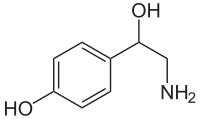
Photo from wikipedia
The phenylalanine/tyrosine degradation pathway is frequently described as a catabolic pathway that funnels aromatic amino acids into citric acid cycle intermediates. Previously, we demonstrated that the accumulation of tyrosine generated… Click to show full abstract
The phenylalanine/tyrosine degradation pathway is frequently described as a catabolic pathway that funnels aromatic amino acids into citric acid cycle intermediates. Previously, we demonstrated that the accumulation of tyrosine generated during the hydrolysis of blood meal proteins in Rhodnius prolixus is potentially toxic, a harmful outcome that is prevented by the action of the first two enzymes in the tyrosine degradation pathway. In this work, we further evaluated the relevance of all other enzymes involved in phenylalanine/tyrosine metabolism in the physiology of this insect. The knockdown of most of these enzymes produced a wide spectrum of distinct phenotypes associated with reproduction, development and nymph survival, demonstrating a highly pleiotropic role of tyrosine metabolism. The phenotypes obtained for two of these enzymes, homogentisate dioxygenase and fumarylacetoacetase, have never before been described in any arthropod. To our knowledge, this report is the first comprehensive gene-silencing analysis of an amino acid metabolism pathway in insects. Amino acid metabolism is exceptionally important in haematophagous arthropods due to their particular feeding behaviour.
Journal Title: Proceedings of the Royal Society B: Biological Sciences
Year Published: 2017
Link to full text (if available)
Share on Social Media: Sign Up to like & get
recommendations!